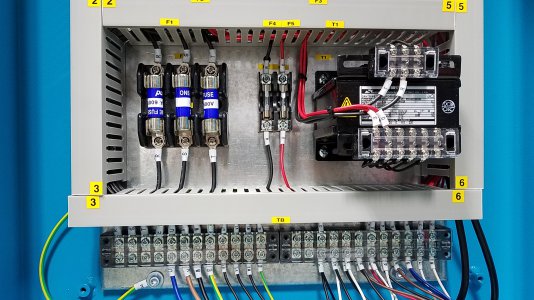- Joined
- Sep 8, 2019
- Messages
- 4,392
This is a pertinent, basic video that I find helpful:
Yeah, it's not that complex. Three phase is just the three wires, switch any two to change direction, ground is ground. The 220V single phase is also simple, two hot legs, one neutral and one ground.
But, sorry to tell you you're going to have to send that plug back. It's an L15-20, similar but not the same as the L15-30 notice the tang points out instead of towards the center.
I'm still for hard-wiring the lathe though. In addition to saving the flexible cords for stuff that needs to move around you get the advantage of running your conductors in conduit which will protect them from cuts and burns.
John
Here is the matching male plug. The company that sold me the RPC sold me this at the same time:
View attachment 340155

As mentioned, the plug is a 30A 4 prong. According to the AMP RPC manual L1 and L2 are the line voltage and L3 is the manufactured leg. The ground is typically the dog legged prong on twist locks, it should also be marked green on the screw. You will need to check with American Rotary as to which prong on the plug in the AMP is the wild leg (I am assuming this is the Z). I would suggest that for L1 you use the black wire, L2 use the red wire and L3 (wild leg) you use the white wire. Typical convention is to wrap a different colored tape (around the white wire to denote it is not a neutral, I will often use some, black, red or brown tape) but doesn't matter in this case. At the lathe you will need to connect the wires to the terminals labeled R, S, and T. The lathe power transformer should have the wires labeled, in the last RL lathe I did an install on, the transformer terminals were labeled R and T (see below) so the wild leg should not be connect to R or T. If you motor is running the wrong direction, then flip the R and T wires at the power connection terminal strip. Be sure ALL POWER IS OFF. You can connect bare wire to the RST connection terminals but I prefer crimped with a locking spade. The crimps must be correctly sized and crimped properly, so if you have an electrician friend maybe have him/her look it over or give you a hand.
R = Black Wire L1
S = White wire L3
T = Red Wire L2
GREEN, GREEN/YELLOW is always ground connect to the "E" terminal.
View attachment 340193
